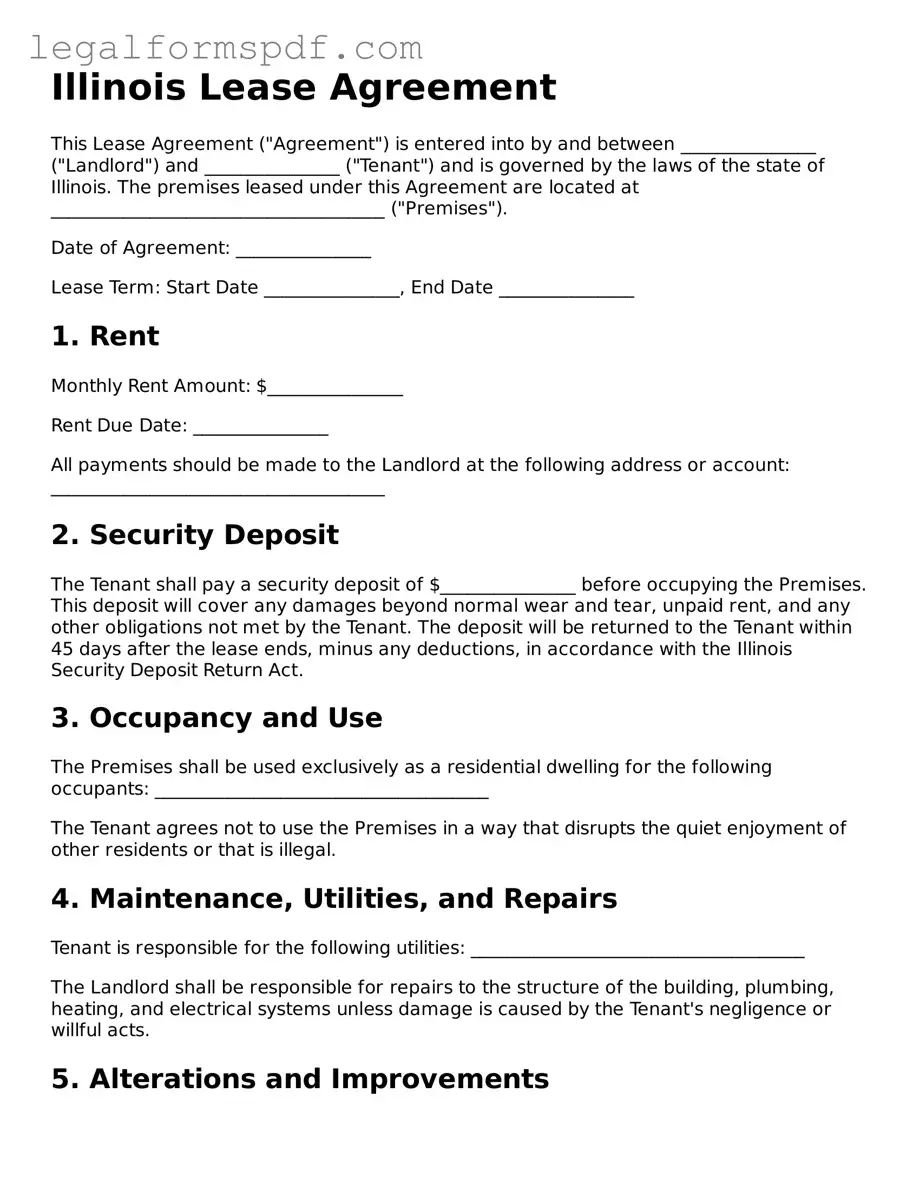Illinois Lease Agreement
This Lease Agreement ("Agreement") is entered into by and between _______________ ("Landlord") and _______________ ("Tenant") and is governed by the laws of the state of Illinois. The premises leased under this Agreement are located at _____________________________________ ("Premises").
Date of Agreement: _______________
Lease Term: Start Date _______________, End Date _______________
1. Rent
Monthly Rent Amount: $_______________
Rent Due Date: _______________
All payments should be made to the Landlord at the following address or account: _____________________________________
2. Security Deposit
The Tenant shall pay a security deposit of $_______________ before occupying the Premises. This deposit will cover any damages beyond normal wear and tear, unpaid rent, and any other obligations not met by the Tenant. The deposit will be returned to the Tenant within 45 days after the lease ends, minus any deductions, in accordance with the Illinois Security Deposit Return Act.
3. Occupancy and Use
The Premises shall be used exclusively as a residential dwelling for the following occupants: _____________________________________
The Tenant agrees not to use the Premises in a way that disrupts the quiet enjoyment of other residents or that is illegal.
4. Maintenance, Utilities, and Repairs
Tenant is responsible for the following utilities: _____________________________________
The Landlord shall be responsible for repairs to the structure of the building, plumbing, heating, and electrical systems unless damage is caused by the Tenant's negligence or willful acts.
5. Alterations and Improvements
The Tenant must obtain written permission from the Landlord before making any alterations, improvements, or additions to the Premises.
6. Access by Landlord
The Landlord shall have the right to enter the Premises for inspections, repairs, and maintenance during reasonable hours and with reasonable notice to the Tenant, in accordance with Illinois landlord-tenant laws.
7. Subletting and Assignment
The Tenant shall not sublet the Premises or assign this lease without the Landlord's prior written consent.
8. Governing Law and Dispute Resolution
This Agreement shall be governed by the laws of the state of Illinois. Any disputes arising under this Agreement shall be resolved through mediation or arbitration in Illinois, before any legal action is taken.
9. Additional Terms and Conditions
________________________________________________________________________________________
10. Signatures
By signing below, the Landlord and Tenant agree to all terms and conditions outlined in this Illinois Lease Agreement.
Landlord Signature: __________________________ Date: _______________
Tenant Signature: __________________________ Date: _______________
